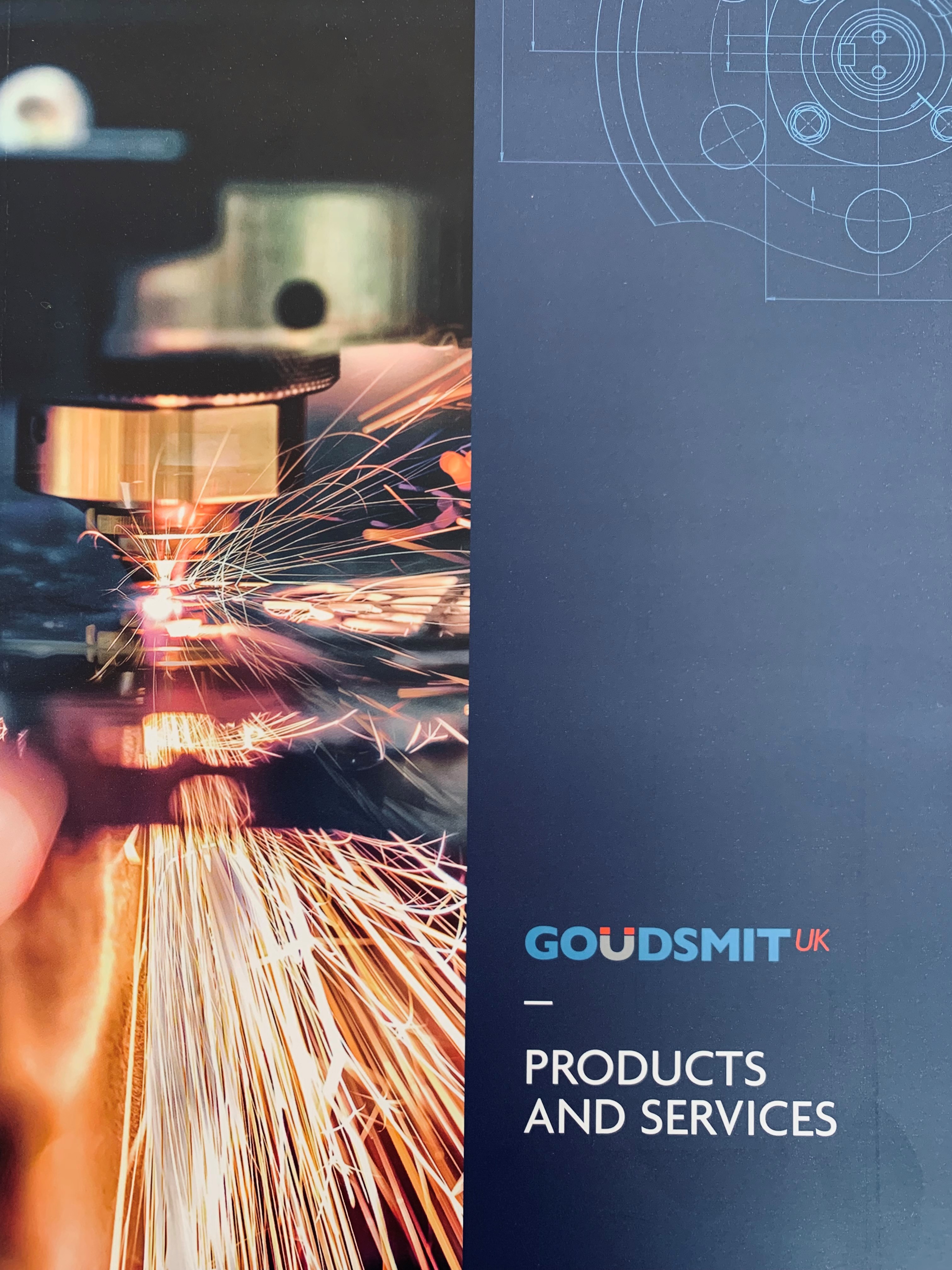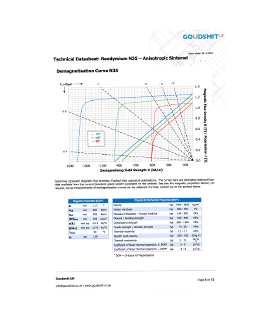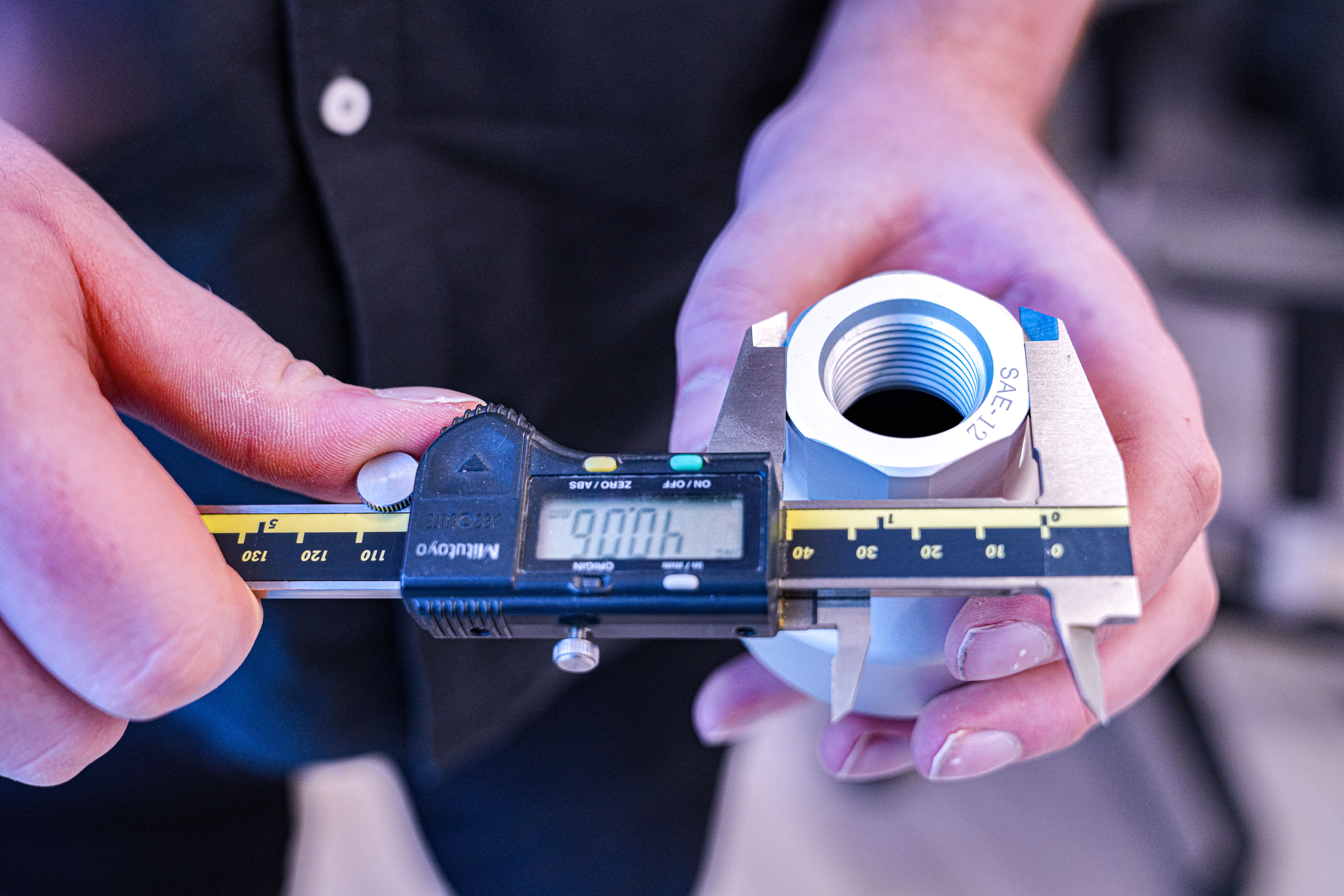Neodymium (NdFeB) magnets are the strongest permanent magnets available, offering unmatched magnetic strength and resistance to demagnetisation.
Goudsmit UK supplies high-quality neodymium magnets for demanding applications across a wide range of industries, including automotive, aerospace, medical and more. Our neodymium magnets can be made bespoke to meet your exact requirements.
To protect these magnets from corrosion and oxidation, coatings are applied to their surfaces. At Goudsmit UK, there are several coatings available for neodymium magnets. The choice of coating depends on the specific application requirements, and the experts at Goudsmit UK can provide guidance to help customers select the right coating for their neodymium magnets.
Nickel (Ni-Cu-Ni)
Gold-coating (Ni-Cu-Ni-Au)
Chrome (Ni-Cu-Ni-Cr)
Copper (Ni-Cu)
Epoxy resin (Ni-Cu-Ni-Epoxy)
Zinc (Zn)
Nickel-zinc (Ni-Cu-Ni-Zn)
Non-stick coating (PTFE)
Without coating:
Silver (Ni-Cu-Ni-Ag)
Neodymium magnets are widely used in many applications due to their exceptional strength and magnetic properties. However, like all magnets, they have both advantages and disadvantages that should be considered when selecting them for use in various applications. Here are some of the advantages and disadvantages of neodymium magnets:
Advantages:
Disadvantages:


| Item | Grade | Remanence | Coercivity | Max Energy Product | Temperature Coefficient | Max Working Temperature | |||||||
|---|---|---|---|---|---|---|---|---|---|---|---|---|---|
| Br | HcB | HcJ | (BH)max | (Br) | (Hcj) | TwMax | |||||||
| T | kGs | kA/m | kOe | kA/m | kOe | KJ/m³ | MGOe | %/°C | %/°C | °C | |||
| N | N35 | 1.17-1.22 | 11.7-12.2 | ≥860 | ≥10.8 | ≥955 | ≥12 | 263-287 | 33-36 | -0.10 ~ -0.12 | -0.4 ~ 0.6 | ≤80 | |
| N38 | 1.23-1.25 | 12.3-13.0 | ≥876 | ≥11 | ≥955 | ≥12 | 287-318 | 36-40 | ≤80 | ||||
| N40 | 1.26-1.32 | 12.6-13.2 | ≥876 | ≥11 | ≥955 | ≥12 | 302-334 | 38-42 | ≤80 | ||||
| N42 | 1.29-1.35 | 12.9-13.5 | ≥876 | ≥11 | ≥955 | ≥12 | 318-350 | 40-44 | ≤80 | ||||
| N45 | 1.32-1.38 | 13.2-13.8 | ≥876 | ≥11 | ≥955 | ≥12 | 334-366 | 42-46 | ≤80 | ||||
| N48 | 1.37-1.43 | 13.7-14.3 | ≥876 | ≥11 | ≥955 | ≥12 | 358-390 | 45-49 | ≤80 | ||||
| N50 | 1.40-1.45 | 14.0-14.5 | ≥876 | ≥11 | ≥955 | ≥12 | 374-406 | 47-51 | ≤80 | ||||
| N52 | 1.42-1.48 | 14.2-14.8 | ≥836 | ≥10.5 | ≥876 | ≥11 | 390-422 | 49-53 | ≤80 | ||||
| N55 | 1.46-1.51 | 14.6-15.1 | ≥860 | ≥10.8 | ≥955 | ≥12 | 406-438 | 51-55 | ≤80 | ||||
| M | N35M | 1.17-1.22 | 11.7-12.2 | ≥868 | ≥10.9 | ≥1114 | ≥14 | 263-287 | 33-36 | ≤100 | |||
| N38M | 1.23-1.30 | 12.3-13.0 | ≥915 | ≥11.5 | ≥1114 | ≥14 | 287-318 | 36-40 | ≤100 | ||||
| N40M | 1.26-1.32 | 12.6-13.2 | ≥963 | ≥12.1 | ≥1114 | ≥14 | 302-334 | 38-42 | ≤100 | ||||
| N42M | 1.29-1.35 | 12.9-13.5 | ≥963 | ≥12.1 | ≥1114 | ≥14 | 318-350 | 40-44 | ≤100 | ||||
| N45M | 1.32-1.38 | 13.2-13.8 | ≥987 | ≥12.4 | ≥1114 | ≥14 | 334-366 | 42-46 | ≤100 | ||||
| N48M | 1.37-1.43 | 13.7-14.3 | ≥1019 | ≥12.8 | ≥1114 | ≥14 | 358-390 | 45-49 | ≤100 | ||||
| N50M | 1.40-1.45 | 14.0-14.5 | ≥1043 | ≥13.1 | ≥1114 | ≥14 | 374-406 | 47-51 | ≤100 | ||||
| N52M | 1.42-1.48 | 14.2-14.8 | ≥1059 | ≥13.3 | ≥1114 | ≥14 | 390-422 | 49-53 | ≤100 | ||||
| N54M | 1.46-1.51 | 14.6-15.1 | ≥995 | ≥12.5 | ≥1035 | ≥13 | 406-438 | 51-55 | ≤100 | ||||
| H | N35H | 1.17-1.24 | 11.7-12.4 | ≥876 | ≥11.0 | ≥1353 | ≥17 | 263-295 | 33-37 | ≤120 | |||
| N38H | 1.23-1.30 | 12.3-13.0 | ≥915 | ≥11.5 | ≥1353 | ≥17 | 286-318 | 36-40 | ≤120 | ||||
| N40H | 1.26-1.32 | 12.6-13.2 | ≥939 | ≥11.8 | ≥1353 | ≥17 | 302-334 | 38-42 | ≤120 | ||||
| N42H | 1.29-1.35 | 12.9-13.5 | ≥963 | ≥12.1 | ≥1353 | ≥17 | 318-350 | 40-44 | ≤120 | ||||
| N45H | 1.32-1.38 | 13.2-13.8 | ≥987 | ≥12.4 | ≥1353 | ≥17 | 334-366 | 42-46 | ≤120 | ||||
| N48H | 1.37-1.43 | 13.7-14.3 | ≥1011 | ≥12.7 | ≥1353 | ≥17 | 358-392 | 45-49 | ≤120 | ||||
| N50H | 1.40-1.45 | 14.0-14.5 | ≥1027 | ≥12.9 | ≥1353 | ≥17 | 374-406 | 47-51 | ≤120 | ||||
| N52H | 1.42-1.48 | 14.2-14.8 | ≥1059 | ≥13.3 | ≥1353 | ≥17 | 390-422 | 49-53 | ≤120 | ||||
| SH | N33SH | 1.14-1.21 | 11.4-12.1 | ≥852 | ≥10.7 | ≥1592 | ≥20 | 247-279 | 31-35 | ≤150 | |||
| N35SH | 1.17-1.24 | 11.7-12.4 | ≥876 | ≥11.0 | ≥1592 | ≥20 | 263-295 | 33-37 | ≤150 | ||||
| N38SH | 1.23-1.29 | 12.3-12.9 | ≥915 | ≥11.5 | ≥1592 | ≥20 | 287-318 | 36-40 | ≤150 | ||||
| N40SH | 1.26-1.32 | 12.6-13.2 | ≥939 | ≥11.8 | ≥1592 | ≥20 | 302-334 | 38-42 | ≤150 | ||||
| N42SH | 1.29-1.35 | 12.9-13.5 | ≥963 | ≥12.1 | ≥1592 | ≥20 | 318-350 | 40-44 | ≤150 | ||||
| N45SH | 1.32-1.38 | 13.2-13.8 | ≥987 | ≥12.4 | ≥1592 | ≥20 | 334-366 | 42-46 | ≤150 | ||||
| N48SH | 1.37-1.43 | 13.7-14.3 | ≥1011 | ≥12.7 | ≥1592 | ≥20 | 358-390 | 45-49 | ≤150 | ||||
| N50SH | 1.40-1.45 | 14.0-14.5 | ≥1027 | ≥12.9 | ≥1592 | ≥20 | 374-406 | 47-51 | ≤150 | ||||
| N52SH | 1.42-1.48 | 14.2-14.8 | ≥1035 | ≥13 | ≥1512 | ≥19 | 390-422 | 49-53 | ≤150 | ||||
| UH | N30UH | 1.08-1.13 | 10.8-11.3 | ≥796 | ≥10.0 | ≥1990 | ≥25 | 223-247 | 28-31 | ≤180 | |||
| N33UH | 1.14-1.18 | 11.4-11.8 | ≥852 | ≥10.5 | ≥1990 | ≥25 | 247-279 | 31-35 | ≤180 | ||||
| N35UH | 1.17-1.24 | 11.7-12.4 | ≥876 | ≥11.0 | ≥1990 | ≥25 | 263-295 | 33-37 | ≤180 | ||||
| N38UH | 1.23-1.29 | 12.3-12.9 | ≥915 | ≥11.5 | ≥1990 | ≥25 | 287-318 | 36-40 | ≤180 | ||||
| N40UH | 1.26-1.32 | 12.6-13.2 | ≥939 | ≥11.8 | ≥1990 | ≥25 | 302-334 | 38-42 | ≤180 | ||||
| N42UH | 1.28-1.35 | 12.8-13.5 | ≥963 | ≥12.1 | ≥1990 | ≥25 | 310-350 | 39-44 | ≤180 | ||||
| N45UH | 1.32-1.38 | 13.2-13.8 | ≥987 | ≥12.4 | ≥1990 | ≥25 | 334-366 | 42-46 | ≤180 | ||||
| N48UH | 1.37-1.42 | 13.7-14.2 | ≥1019 | ≥12.8 | ≥1910 | ≥24 | 358-390 | 45-49 | ≤180 | ||||
| N50UH | 1.39-1.45 | 13.9-14.5 | ≥995 | ≥12.5 | ≥1990 | ≥25 | 374-406 | 47-51 | ≤180 | ||||
| EH | N30EH | 1.08-1.15 | 10.8-11.5 | ≥812 | ≥10.2 | ≥2388 | ≥30 | 223-255 | 28-32 | ≤200 | |||
| N33EH | 1.14-1.21 | 11.4-12.1 | ≥851 | ≥10.7 | ≥2388 | ≥30 | 247-279 | 31-35 | ≤200 | ||||
| N38EH | 1.17-1.24 | 11.7-12.4 | ≥876 | ≥11.0 | ≥2388 | ≥30 | 263-295 | 33-37 | ≤200 | ||||
| N38EH | 1.23-1.29 | 12.3-12.9 | ≥915 | ≥11.5 | ≥2388 | ≥30 | 287-318 | 36-40 | ≤200 | ||||
| N40EH | 1.26-1.32 | 12.6-13.2 | ≥939 | ≥11.8 | ≥2388 | ≥30 | 302-334 | 38-42 | ≤200 | ||||
| N42EH | 1.28-1.35 | 12.8-13.5 | ≥963 | ≥12.1 | ≥2388 | ≥30 | 318-350 | 39-44 | ≤200 | ||||
| N45EH | 1.33-1.38 | 13.3-13.8 | ≥995 | ≥12.5 | ≥2308 | ≥29 | 334-366 | 42-46 | ≤200 | ||||
| AH | N28AH | 1.04-1.12 | 10.4-11.2 | ≥772 | ≥9.7 | ≥2786 | ≥35 | 207-239 | 26-30 | ≤230 | |||
| N30AH | 1.08-1.15 | 10.8-11.5 | ≥812 | ≥10.2 | ≥2786 | ≥35 | 223-255 | 28-32 | ≤230 | ||||
| N33AH | 1.14-1.21 | 11.4-12.1 | ≥852 | ≥10.7 | ≥2786 | ≥35 | 247-279 | 31-35 | ≤230 | ||||
| N35AH | 1.17-1.24 | 11.7-12.4 | ≥876 | ≥11.0 | ≥2786 | ≥35 | 263-295 | 33-37 | ≤230 | ||||
| N38AH | 1.23-1.27 | 12.3-12.7 | ≥923 | ≥11.6 | ≥2786 | ≥35 | 287-318 | 36-40 | ≤230 | ||||
| N40AH | 1.26-1.31 | 12.6-13.1 | ≥939 | ≥11.8 | ≥628 | ≥33 | 302-334 | 38-42 | ≤230 | ||||
| N42AH | 1.29-1.35 | 12.9-13.5 | ≥955 | ≥12.0 | ≥2628 | ≥33 | 318-350 | 40-44 | ≤230 | ||||
| Diffusion Process | |||||||||||||
| SH | G48SH | 1.37-1.42 | 13.7-14.2 | ≥1011 | ≥13 | ≥1592 | ≥20 | 358-390 | 45-49 | ≤150 | |||
| G50SH | 1.40-1.45 | 14.0-14.5 | ≥1027 | ≥13.2 | ≥1592 | ≥20 | 374-406 | 47-51 | ≤150 | ||||
| G52SH | 1.42-1.48 | 14.2-14.8 | ≥1067 | ≥13.4 | ≥1592 | ≥20 | 390-422 | 49-53 | ≤150 | ||||
| G55SH | 1.46-1.51 | 14.6-15.1 | ≥1083 | ≥13.6 | ≥1592 | ≥20 | 406-438 | 51-55 | ≤150 | ||||
| UH | G45UH | 1.33-1.38 | 13.7-13.8 | ≥978 | ≥12.4 | ≥1990 | ≥25 | 334-366 | 42-46 | ≤180 | |||
| G48UH | 1.37-1.42 | 13.7-14.2 | ≥1027 | ≥12.9 | ≥1990 | ≥25 | 358-390 | 45-49 | ≤180 | ||||
| G50UH | 1.40-1.45 | 14.0-14.5 | ≥1051 | ≥13.2 | ≥1990 | ≥25 | 374-406 | 47-51 | ≤180 | ||||
| G52UH | 1.42-1.48 | 14.2-14.8 | ≥1067 | ≥13.4 | ≥1990 | ≥25 | 390-422 | 49-53 | ≤180 | ||||
| G54UH | 1.46-1.51 | 14.6-15.1 | ≥1075 | ≥13.5 | ≥1990 | ≥25 | 406-438 | 51-55 | ≤180 | ||||
| EH | G40EH | 1.26-1.31 | 12.6-13.1 | ≥955 | ≥12.0 | ≥2388 | ≥30 | 302-334 | 38-42 | ≤200 | |||
| G44EH | 1.29-1.35 | 12.9-13.5 | ≥971 | ≥12.2 | ≥2388 | ≥30 | 318-350 | 40-44 | ≤200 | ||||
| G46EH | 1.33-1.38 | 13.3-13.8 | ≥1011 | ≥12.7 | ≥2388 | ≥30 | 334-366 | 42-46 | ≤200 | ||||
| G48EH | 1.37-1.42 | 13.7-14.2 | ≥1027 | ≥12.9 | ≥2388 | ≥30 | 358-390 | 45-49 | ≤200 | ||||
| G50EH | 1.40-1.45 | 14.0-14.5 | ≥1051 | ≥13.2 | ≥2308 | ≥29 | 374-406 | 47-51 | ≤200 | ||||
| Item | Grade | Remanence | Coercivity | Max Energy Product | Max Working Temperature | Density | |||||
|---|---|---|---|---|---|---|---|---|---|---|---|
| Br | HcB | HcJ | (BH)max | TwMax | P | ||||||
| T | kGs | kA/m | kOe | kA/m | kOe | KJ/m³ | MGOe | °C | g/cm³ | ||
| Compression Moulding NdFeB Magnet | KBM-2 | 0.30-0.40 | 3.0-4.0 | 160-240 | 2.0-3.0 | 420-640 | 6.0-8.0 | 16-24 | 2.0-3.0 | ≤120 | 4.5-6.0 |
| KBM-4 | 0.40-0.50 | 4.0-5.0 | 240-320 | 3.0-4.0 | 560-720 | 7.0-9.0 | 32-44 | 4.0-5.5 | ≤120 | 5.2-6.0 | |
| KBM-6 | 0.50-0.60 | 5.0-6.0 | 320-400 | 4.0-5.0 | 430-640 | 6.0-8.0 | 48-60 | 6.0-7.5 | ≤120 | 5.5-6.0 | |
| KBM-8 | 0.60-0.68 | 6.0-6.8 | 360-440 | 4.5-5.5 | 640-800 | 8.0-10.0 | 64-72 | 8.0-9.0 | ≤150 | 5.8-6.1 | |
| KBM-8H | 0.60-0.65 | 6.0-6.5 | 400-480 | 5.0-6.0 | 1120-1230 | 14.0-16.0 | 60-68 | 7.5-8.5 | ≤160 | 5.8-6.2 | |
| KBM-8L | 0.65-0.68 | 6.5-6.8 | 400-480 | 5.0-6.0 | 900-1120 | 11.0-14.0 | 64-72 | 8.0-9.0 | ≤160 | 5.8-6.2 | |
| KBM-9 | 0.60.0.68 | 6.0-6.8 | 400-480 | 5.0-6.0 | 640-800 | 8.0-10.0 | 68-72 | 8.5-9.0 | ≤150 | 5.8-6.2 | |
| KBM-10 | 0.68-0.73 | 6.8-7.3 | 400-480 | 5.0-6.0 | 640-800 | 8.0-10.0 | 76-84 | 9.5-10.5 | ≤150 | 5.8-6.2 | |
| KBM-12 | 0.71-0.75 | 7.1-7.5 | 440-520 | 5.5-6.5 | 720-800 | 9.0-10.0 | 84-96 | 10.5-12.0 | ≤150 | 6.0-6.2 | |
| KBM-12L | 0.72-0.76 | 7.2-7.6 | 400-480 | 5.0-6.0 | 480-640 | 6.0-8.0 | 84-96 | 10.5-12.0 | ≤140 | 6.0-6.2 | |
| Injection Moulding NdFeB Magnet | KBI-3 | 0.20-0.30 | 2.0-3.0 | 160-240 | 2.0-3.0 | 480-640 | 6.0-8.0 | 12-24 | 1.5-3.0 | ≤100 | 3.9-4.4 |
| KBI-4 | 0.35-0.45 | 3.5-4.5 | 240-320 | 3.0-4.0 | 560-720 | 7.0-9.0 | 24-36 | 3.0-4.5 | ≤120 | 4.2-4.9 | |
| KBI-5 | 0.45-0.52 | 4.5-5.2 | 320-360 | 4.0-4.5 | 560-720 | 7.0-9.0 | 36-44 | 4.5-5.5 | ≤120 | 4.5-5.0 | |
| KBI-5H (PPS) | 0.48-0.52 | 4.8-5.2 | 400-480 | 5.0-6.0 | 380-1040 | 11.0-13.0 | 36-44 | 4.5-5.5 | ≤150 | 4.9-5.4 | |
| KBI-6 | 0.50-0.55 | 5.0-5.5 | 320-440 | 4.0-5.5 | 640-800 | 8.0-10.0 | 44-52 | 5.5-6.5 | ≤120 | 4.7-5.1 | |
| KBI-7 | 0.54-0.64 | 5.4-6.4 | 320-400 | 4.0-5.5 | 640-800 | 8.0-10.0 | 52-60 | 6.5-7.5 | ≤120 | 5.0-5.5 | |
| KBI-8 | 0.64-0.74 | 6.4-7.4 | 400-480 | 5.0-6.0 | 640-803 | 8.0-10.0 | 68-76 | 8.5-9.5 | ≤120 | 5.0-5.9 | |

Give us a call
+44 (0) 2890 271 001Send us an email
info@goudsmit.co.uk